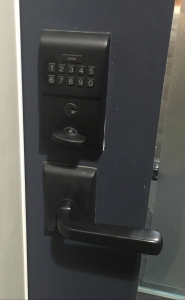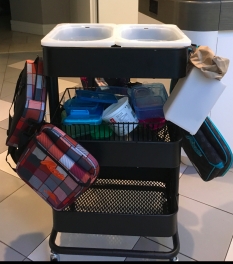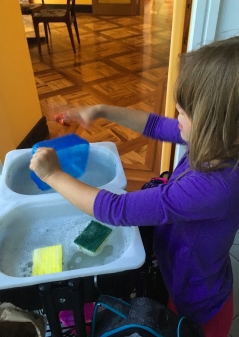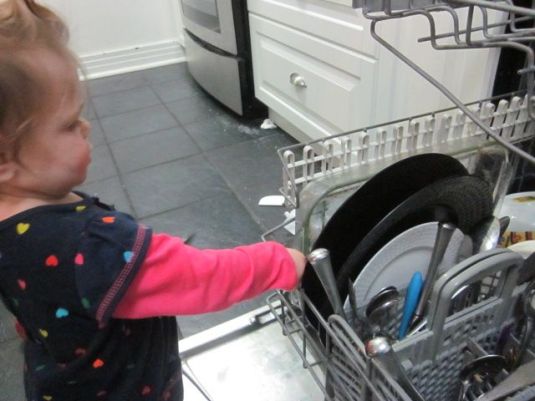I don’t know about you, but I’ve found that trying to teach my kids anything that’s difficult for them is a one way ticket to screamville, with an optional stop-over in cryingtown. It starts out ok, but then I speak up about a needed correction or to optimize someone’s technique, and next thing I know frustration turns outwards into anger at me – the one wielding the metaphorical red pen of correction.
In general, I try to work with my children’s natures rather than against them. I prefer to make structural or design changes rather than acting as an enforcer – by using our computer’s built-in timers and parental controls to limit screen time, for instance. Or by accepting that nobody in this house will take the extra two seconds to put their coat on a hanger, and eschewing a coat closet in favour of a large entryway lined with coat hooks.
But some things need to be taught, don’t they? Like practicing an instrument – if you keep doing it wrong, you’ll just cement your mistakes. Don’t I have to point them out, even when I’d rather keep the peace?
Not really, no.
In Montessori education there’s this thing called “Control of Error.” Every learning material in a Montessori classroom has a way for the child to check their own work. The teacher does not correct the child’s work or reveal the solution – the materials do this as a matter of course. The child can tell whether or not they have completed the task successfully and they know when they need to work on it some more and when they can say that they’ve mastered the work. If only life were that simple.
When asked what musical instrument she’d like to study, our oldest daughter, K, revealed that she’d actually really like to learn to sing. Only one problem with that – K has a dreadful sense of pitch. She’s not tone deaf (almost nobody really is), but ear training is an area of significant weakness for her.
Now, can you imagine me trying to teach her to sing on pitch? Correcting her every few seconds? Can you imagine her rising frustration and the eventual explosion of anger? No, thank you. I decline. There must be another way.
Ultimately I found it in the form of a (free!) computer program that trains you to sing on pitch. K puts on her headset, listens, and then sings what the computer plays for her. The program displays the pitch she sang as compared to the one she listened to. It’s a bit like biofeedback. K can see whether she’s on pitch or not, and if not, in which direction she should modulate. The control of error is all in the program. No frustration, no screaming, just her trying until she can see that she has succeeded.
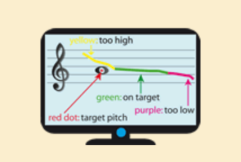
N is learning piano. I typically help him with his practice, which means that I interrupt with, “No! Stop! Do it again!” every time he makes a mistake. If I don’t correct him, he’ll barrel right through the piece, unaware of what he could be doing better.
It so happens that N was practicing his song in the music room at school, and somehow was able to record his playing. “Eema,” he told me later, “I don’t sound so good!” I’d been trying to explain this to him for the past few weeks, but it only clicked for him when he heard himself play.
Including control of error in any task is a huge win. For the children, they can truly perceive their errors rather than having to believe that we’re right and they’re wrong. For the parents or teachers, it’s one fewer source of conflict in what (let’s face it) can easily become a combative relationship. And that’s just a relief for all of us.
